How To Set Up Aquarium Bubbler
As a kid, I recollect staring at our goldfish tank for hours.
In that location was but one thing in the tank that interested me more than the fish…
The bubbling.
The way they floated through the water in a hypnotizing rhythm was fascinating.
That was my first experience with an aquarium bubbler… A retentivity that was long forgotten until a beginner aquarist asked me:
What do aquarium bubblers do?
It was that very question, forth with the fond memories, that inspired this article.
Today, I am going to teach you everything you need to know most aquarium bubblers!
What is an aquarium bubbler?
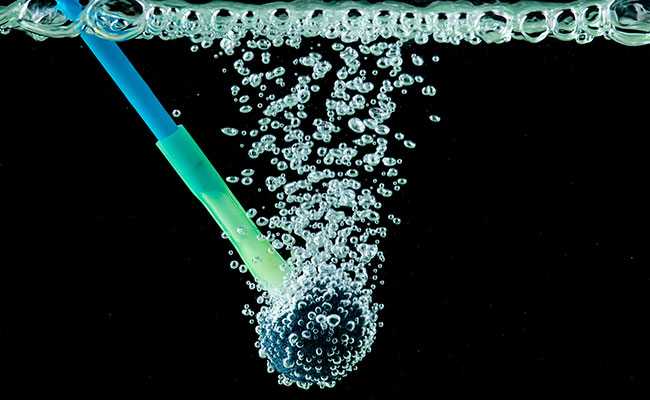
A bubbler refers to whatever device that attaches to an air pump, via an airline tube, in order to create bubbles inside your aquarium.[1]
Examples of bubblers include airstones, chimera wands and bubble walls.
Aquarium bubblers are typically run 24/vii.
What does an aquarium bubbler do?

On its own, a bubbler performs two helpful functions:[2]
1. Aerate the h2o
Just like you lot and me, fish demand to breathe.
To do this, fish depict dissolved oxygen out of the water – without it, most breeds of fish volition suffocate.
Bubblers add together oxygen to your aquarium. But not how y'all think…
It may seem like oxygen would enter the h2o from the chimera. But this only contributes an incredibly small amount, so little in fact that it is barely worth mentioning.
Virtually of the oxygen in your aquarium enters from the surface and dissolves into the water through a process known every bit gas commutation.
When the surface is yet, less oxygen enters the water than when it is moving.
Call back virtually fish that live in rivers and oceans. The visible water on the surface is constantly moving, allowing for a greater corporeality of oxygen to enter the h2o.
A bubbler does the same thing, on a much smaller calibration.
As the bubbles ascension, they agitate the surface, allowing a greater amount of oxygen to enter the h2o.
2. Increase water movement
As the air bubbles rise in fish tank, water rises with them. This creates a current that circulates water around your tank.
Because the bubbles gently rise, the result is often a gentler water menstruum than if using a powerhead that shoots across the fish tank.
Of course, if y'all already have a good fish tank filter, lily pipe or spray bar providing apportionment, then in that location is hardly any benefit to adding a bubbler… Which brings me to my next point…
Do yous need an aquarium bubbler?
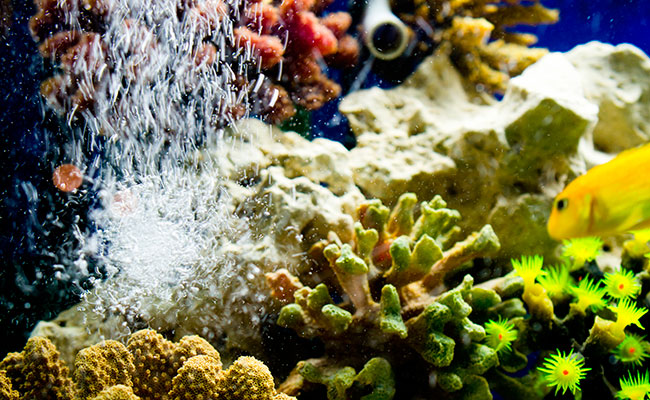
An aquarium bubbler is a funny piece of equipment.
In many fish tanks, the benefits of a bubbler tin readily be achieved with equipment that is already in the tank.
For example, you lot could aim your filter render toward the surface of the h2o or apply a circulation fan to similar outcome.
Saltwater fish tanks in particular should have filtration and circulation that beat out any bubbler.
However, for smaller freshwater setups, an aquarium bubbler can exist beneficial.
Whether you lot need an aquarium bubbler entirely depends on your setup. Many people utilise bubblers when creating a DIY equipment such as sponge filters – the bubbler is used to "drive" the filter, causing it to draw in h2o.
If your water is not circulating or low on oxygen, then a bubbler could be just what you need!
Note: The brood of fish likewise determines whether you lot demand a bubbler. Certain fish have adapted to stagnant h2o, like betta, and tin fifty-fifty draw h2o from the surface. In this case, the h2o movement caused by a bubbler can actually stress the fish.
What are the downsides to aquarium bubblers?
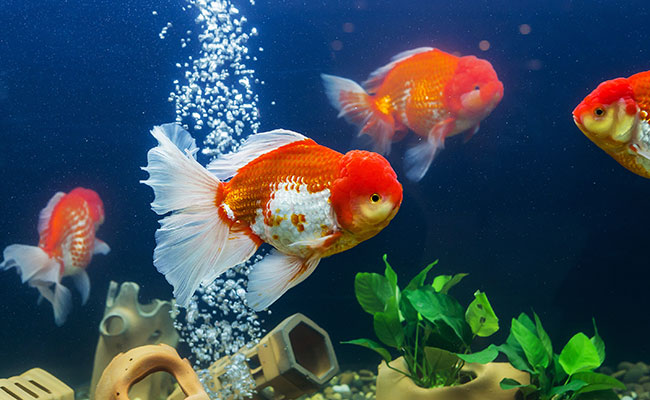
If yous are considering a bubbler for your aquarium, there are a couple of downsides that you should be aware of:
1. Bubblers are conspicuously visible
This downside is a thing of personal gustatory modality.
It is difficult to ignore the ascent trail of bubbles emitting from an aquarium bubbler.
Even if you hide the aquarium bubbler behind plants or in the substrate, the stream of bubbles is clearly visible.
While some aquarists, or me as a child, find that the stream of bubbles enhances aquariums, others call up they are ugly and unnatural – not exactly suitable for a display tank.
2. Bubbles can promote common salt creep in saltwater tanks
Let's face it – if you have a saltwater fish tank, yous are not likely to buy a bubbler anyhow.
Merely only in case you lot were considering information technology…
A bubbler can brand salt creep worse.
While y'all might not be able to run into it, when the bubbles pop at the surface of your aquarium, they splash tiny amounts of water.
On its own this wouldn't be a problem. But in a saltwater fish tank, as the water dries, it leaves behind a modest amount of table salt crystals.
It is for this reason that nigh saltwater tank owners recommend using a circulation pump, also called a circulation fan or moving ridge maker, since it tin can provide the same benefits as a bubbler without the table salt creep.
What are the different types of aquarium bubblers?
Bubblers come in different shapes and sizes. Below I comprehend some of the most common types of bubblers yous will come up beyond.
Simply place these bubblers on the stop of your airline to fill your aquarium with bubbly goodness.
one. Airstones
Cheap and effective, airstones are the most common type of aquarium bubbler.
Despite the proper name, airstones can be fabricated from whatsoever porous substance including wood, sand, stone and fifty-fifty plastic.
Airstones tin be small…
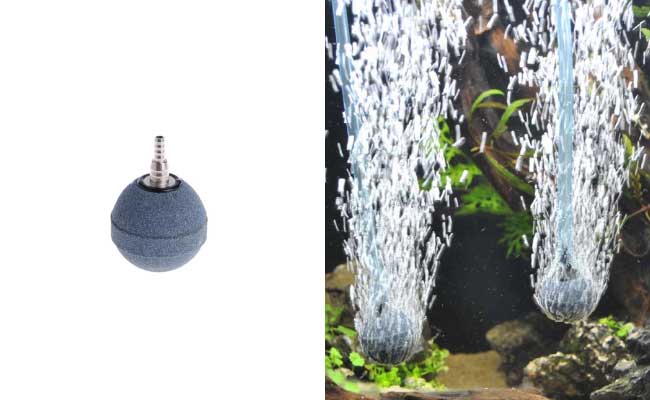
Large…
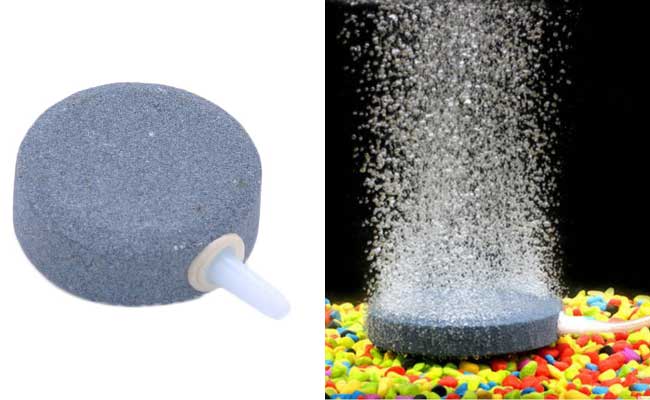
Or, come in any shape…

The size of the bubbles depends on the coarseness of the airstone. A rough airstone will diffuse larger bubbling while a fine airstone volition diffuse tiny bubbling that you can barely see.
two. Bubble wands
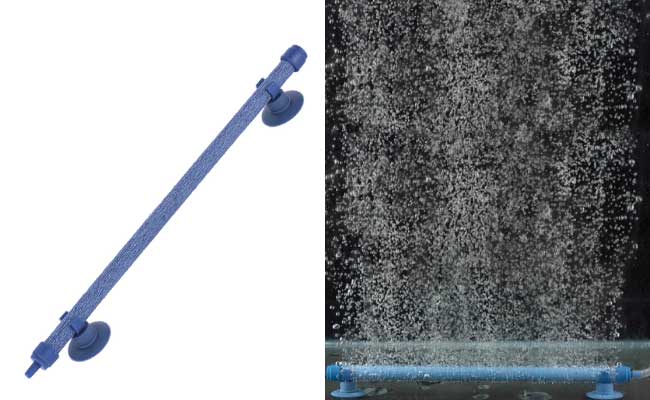
While these are essentially only long, narrow airstones, they are commonly referred to equally bubble wands.
The bubble wand gives off a wall of bubbles, lending the aquarium a distinctly dissimilar look to smaller airstones.
Most chimera wands come with suction cups to preclude them from floating around your aquarium.
three. Flexible bubble walls
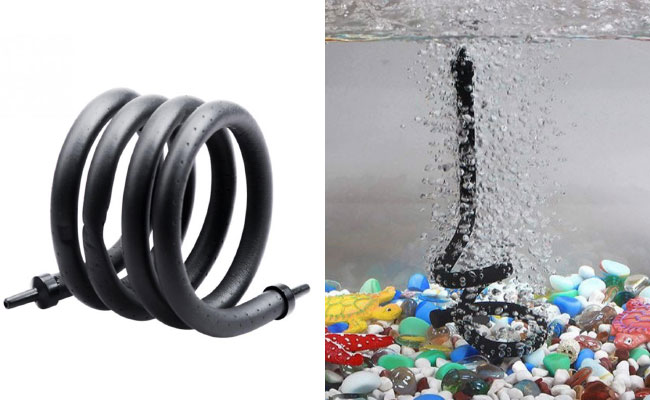
Bubble walls come up in a variety of different lengths and are made from a flexible safe material. The bubble wall can exist twisted, coiled or spread effectually the tank in any way that you lot run across fit.
Pocket-sized holes are dotted along the surface to let bubbles escape from the hose and into the h2o.
If yous are considering using a chimera wall, exist aware that you lot volition need to clench or weigh the hose down – specially if you lot are trying to display your chimera wall horizontally. Otherwise, it volition float to the surface.
4. LED bubbler
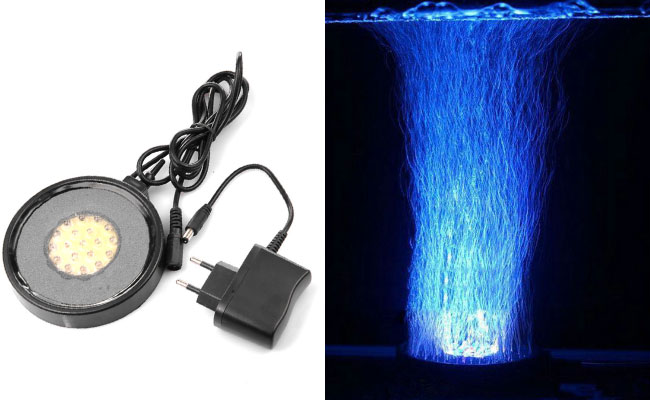
Let at that place be calorie-free!
An LED bubbler is substantially an airstone with an LED light. In addition to needing an air pump, this bubbler besides needs to exist plugged into an electrical outlet.
As the colored lite shines through the bubbles, it creates a mini aquarium light show, specially when paired with GloFish. [3]
Most LED bubblers come with a remote control, allowing you lot to modify the color to match the décor of your room.
5. Bubbler ornament (decorations)
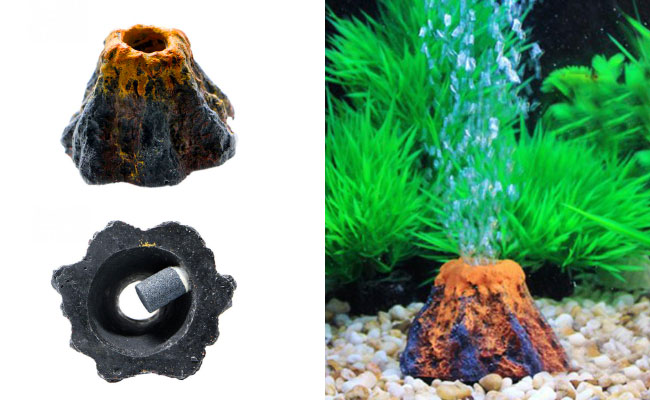
Bubbler ornaments can accept on whatever shape or size – from sunken treasure chests that open and close to small-scale cities. There are no limits!
Despite the wide variety of sizes, bubbler ornaments frequently apply one of the previously mentioned ways to create bubbles – typically an airstone.
Which bubbler makes the smallest, finest bubbles?
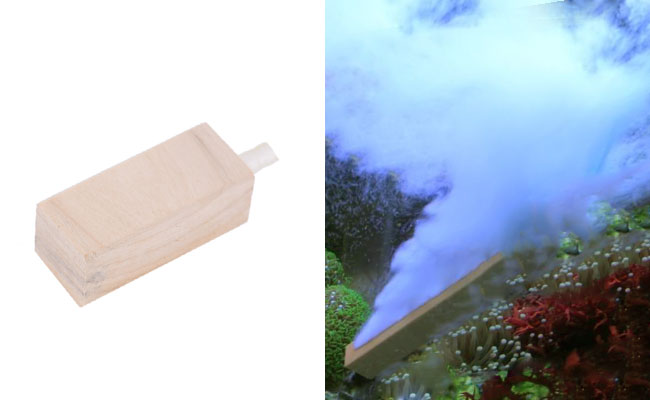
There is no arguing. If you want the smallest, finest bubbles possible, yous desire an airstone made from limewood.
Despite the name, this forest doesn't come from a Lime tree simply rather Lindens. The wood from these trees contains tiny pores and when air is pumped through it, information technology diffuses bubbles in a fine mist.
Note: If your poly peptide skimmer requires fine bubbles to operate, limewood is exactly what you need. Just remember that yous volition need to change the airstone every 3-6 months considering they will eventually clog in the salt water.
Why isn't your aquarium bubbler working properly?
The effectiveness of a bubbler depends entirely on the strength of your air pump. One that is likewise weak won't be able to provide the pressure level needed to push button air through and create bubbling.
This is a problem nigh commonly seen with larger aquarium bubblers where the air pump is non powerful plenty to push button air through the entire surface of the bubbler.
The trouble is easily overcome past purchasing a stronger air pump.
If you notice that bubbling only exit from the base of your bubbler, it's possible you have a leak. This is particularly common with cheaper airstones where the base has not been glued on properly.
In about cases, you volition be able to fix this problem by using epoxy resin to seal the leak.
Conclusion
While aquarium bubblers are not ideal for every setup, they still take their uses.
Do y'all want to learn more than about the bubblers? Then read about other parts connected to them, such as air check valves, airline control valves, and airline tubing.
Exercise you employ a bubbler in your aquarium? Permit me know in the comments below!
How To Set Up Aquarium Bubbler,
Source: https://fishlab.com/aquarium-bubbler/
Posted by: spanglerexan1975.blogspot.com


0 Response to "How To Set Up Aquarium Bubbler"
Post a Comment